What are the Different Enterprise Storage Systems?
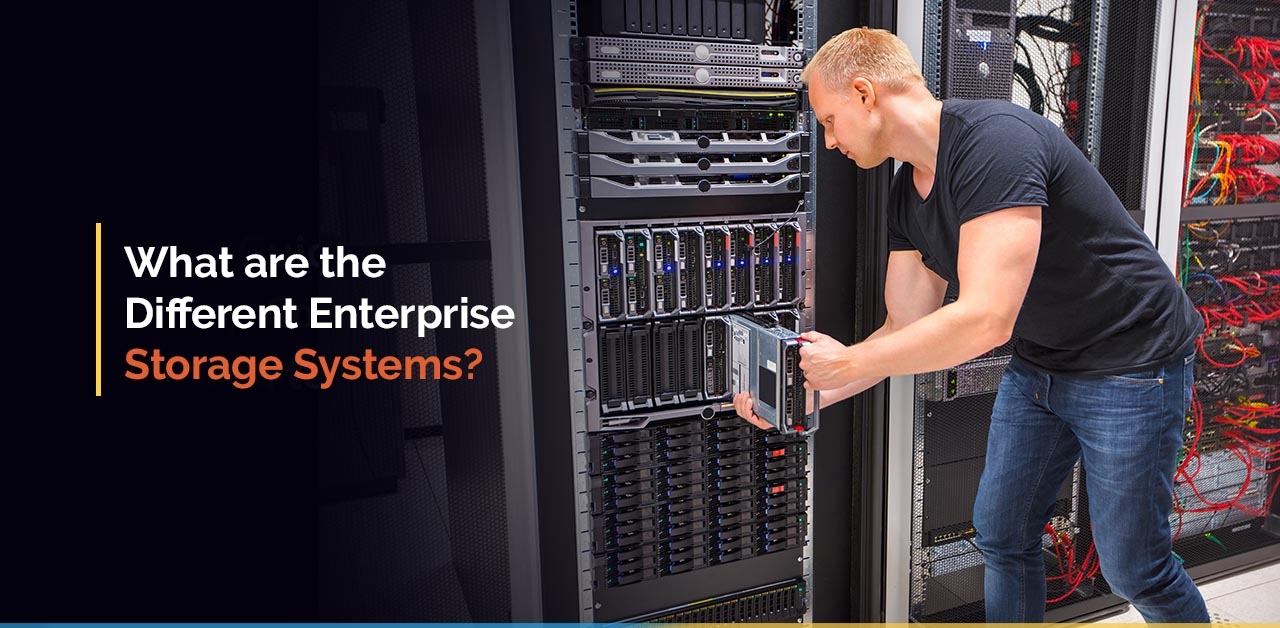
An enterprise data storage system has become the need of the hour. Data and its storage have become a topic of discussion for various companies.
Amidst all this, you need to know what this entire process of enterprise data storage system is.
Today, through this blog, you will have an insight into the same. We will discuss the various types of enterprise data storage, their advantages and much more.
What is the enterprise data storage system?
Venture Storage System is a collated archive for business data that give regular information management and assurance, just as information sharing capacities, through associations with various PC frameworks.
Endeavor stockpiling framework includes the utilization of a capacity zone organize (SAN), as opposed to a circulated stockpiling framework, and incorporates advantages, for example, high accessibility and fiasco recuperation, information sharing, and effective, dependable reinforcement and rebuilding capacities, just as a concentrated organization and remote help.
Since undertakings manage overwhelming outstanding tasks at hand of business-basic data, endeavor to stockpile frameworks ought to be versatile for remaining tasks at hand of many terabytes or even petabytes without depending on unreasonable cabling or the making of subsystems. Other significant parts of a venture stockpiling framework are boundless network and backing for numerous stages.
What are the characteristics of enterprise data storage systems?
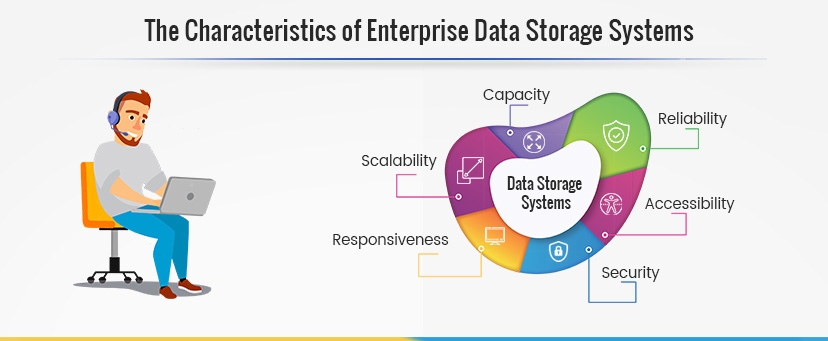
What are the types of enterprise data storage?
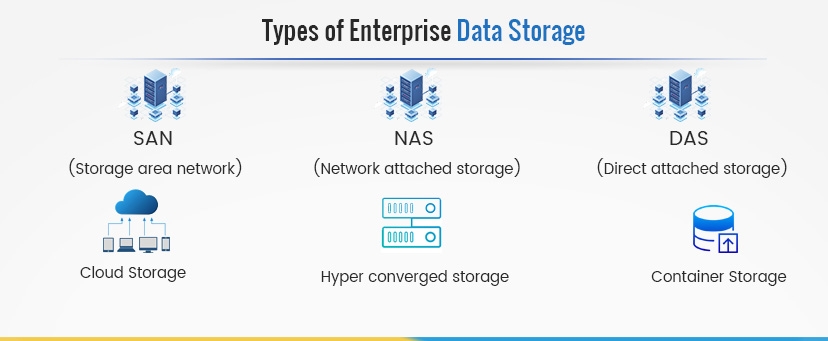
- DAS
Direct Attached Storage (DAS) is a committed advanced stockpiling gadget connected straightforwardly to a server or PC employing a link. Trendsetting innovation Attachment (ATA), Serial Advanced Technology Attachment (SATA), eSATA, Small Computer System Interface (SCSI), Serial Attached SCSI (SAS), and Fiber Channel are the principle conventions utilized for DAS associations.
Points of interest of DAS
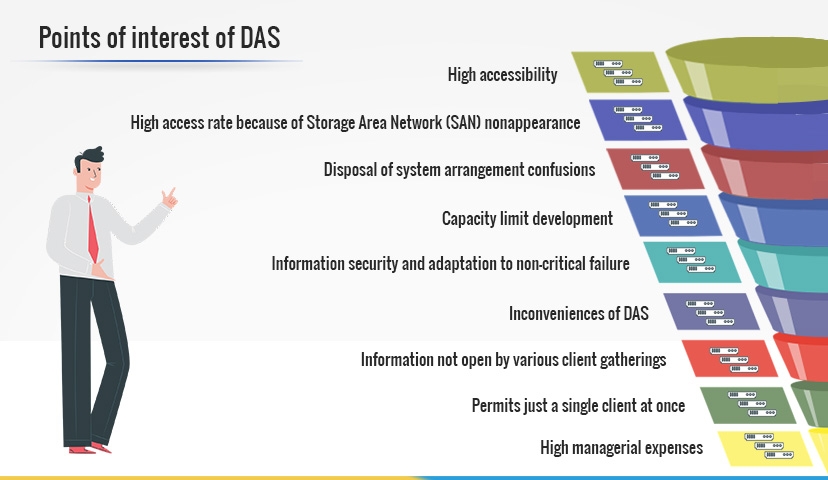
- SAN
A Storage Area Network (SAN) is a specific, fast system that gives square level system access to capacity. SANs are regularly made out of hosts, switches, stockpiling components, and capacity gadgets that are interconnected utilizing an assortment of innovations, topologies, and conventions. SANs may likewise traverse various destinations. A SAN presents stockpiling gadgets to a host with the end goal that the capacity gives off an impression of being privately appended. This disentangled introduction of capacity to a host is cultivated utilizing various kinds of virtualization.
SANs are frequently used to:
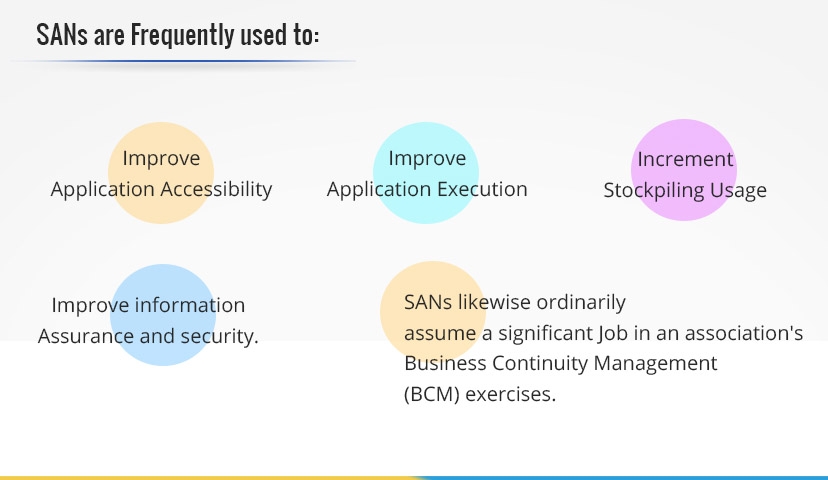
SANs are normally founded on Fiber Channel (FC) innovation that uses the Fiber Channel Protocol (FCP) for open frameworks and exclusive variations for centralized servers. Moreover, the utilization of Fiber Channel over Ethernet (FCoE) makes it conceivable to move FC traffic crosswise over existing fast Ethernet foundations and merge stockpiling and IP conventions onto a solitary link. Different advancements like Internet Small Computing System Interface (iSCSI), regularly utilized in little and medium estimated associations as a more affordable option to FC, and InfiniBand, usually utilized in elite registering situations, can likewise be utilized. What's more, it is conceivable to utilize passages to move information between various SAN advances.
- NAS
Network Approach Storage (NAS) empowers numerous customer gadgets and clients to get to information from a focal pool of plate stockpiling. Clients get to the mutual stockpiling of NAS, which shows up as a hub with its very own Internet Protocol (IP) address on the neighborhood (LAN) over an Ethernet association. Simple entry, ease, and high limits describe NAS.
NAS benefits
Scale-out limit: Adding more stockpiling ability to NAS is as simple as including all the more hard circles. You don't need to redesign or supplant existing servers, and new stockpiling can be made accessible without closing down the system.
Execution: Because NAS is devoted to serving documents, it expels the obligation of record serving from other arranged gadgets. What's more, since NAS is tuned to explicit use cases (like huge information or interactive media stockpiling), customers can anticipate better execution.
Simple arrangement: NAS designs are regularly conveyed with disentangled contents, or even as apparatuses preinstalled with a streamlined working framework—extraordinarily lessening the time it takes to set it up and deal with the framework.
Openness: Every arranged gadget approaches NAS.
Adaptation to internal failure: NAS can be designed to help recreated circles, an excess exhibit of autonomous plates, or deletion coding to guarantee information respectability.
- Distributed storage
Enterprise distributed storage comprises of capacity limit acquired from an open cloud specialist co-op. Endeavors frequently go to distributed storage to decrease or dispose of unnecessary on-premises stockpiling costs, diminish the unpredictability of overseeing stockpiling, and overhaul server farm foundation. The three significant open distributed storage suppliers are Amazon Web Services (AWS), Google Cloud and Microsoft Azure. Others incorporate Alibaba Cloud, IBM's Bluemix, Oracle and Rackspace, just as a large group of provincial suppliers. There are likewise frameworks integrators and oversaw suppliers offering cloud administrations, and numerous customary programming organizations that presently offer distributed storage administrations for their applications and administrations.
Ultimately, cloud passage sellers, as Panzura, have made venture distributed storage a piece of their half and half models, as have capacity management merchants that have incorporated administration as a help (MaaS) into their items. Extending the need for information is one of the key explanations behind the thought of capacity inside the cloud. Following corporate administration, consistence and administrative necessities are driving associations to keep tremendous measures of information that they produce for longer timeframes. Extending stockpiling needs are presently pushing the significance of distributed storage.
- Compartment Storage
Compartment stockpiling can comprise hundreds or thousands of individual-related holders, each facilitating disengaged and separate versatile preparing modules of the general application process. Holders were intended to let clients effectively create and convey stateless microservice layers of an application as a kind of nimble middleware, with no steady information stockpiling required. One explanation containerized application configuration has developed in notoriety with undertakings in the course of the most recent quite a long while is the plan's help for Agile application advancement and organization. Holders can rapidly scale up as required in a generation domain and afterward leave when never again required. It is the proficiency, adaptability, deftness, cloud-neighborliness and lower expenses of this methodology that have undertakings seeking holder designs for past microservices.
Accordingly, holder sellers, for example, Docker and Kubernetes, began to bring some degree of tenacious information stockpiling backing to compartments. Likewise, new businesses, for example, Portworx have tended to this issue, regularly more completely, by empowering holder stockpiling volumes to move with their compartments.
Compartment information, similar to all endeavour information, needs security. Because of a few components, holders by their tendency can't give reinforcement information to standard reinforcement applications straightforwardly. They require a fundamental organization stage at the capacity or host layer. A few stockpiling sellers have ventured up and empowered endeavours to back upholder information - including Asigra, Blockbridge Networks, Commvault, NetApp, Nimble Storage, and Pure Storage - by offering this coordination layer.
Conclusion
A significant thought process goes in picking the best approach for their information stockpiling framework actualize it in house, in their very own server farms, or the cloud. The force is currently with distributed storage, which offers preferences in the cost and simplicity of the board. Distributed storage sellers offer their items on a month to month expense premise in which the client pays just for capacity utilized during that charging period.
I hope this blog will help you in your process of selecting the right Enterprise storage system. Good Luck.







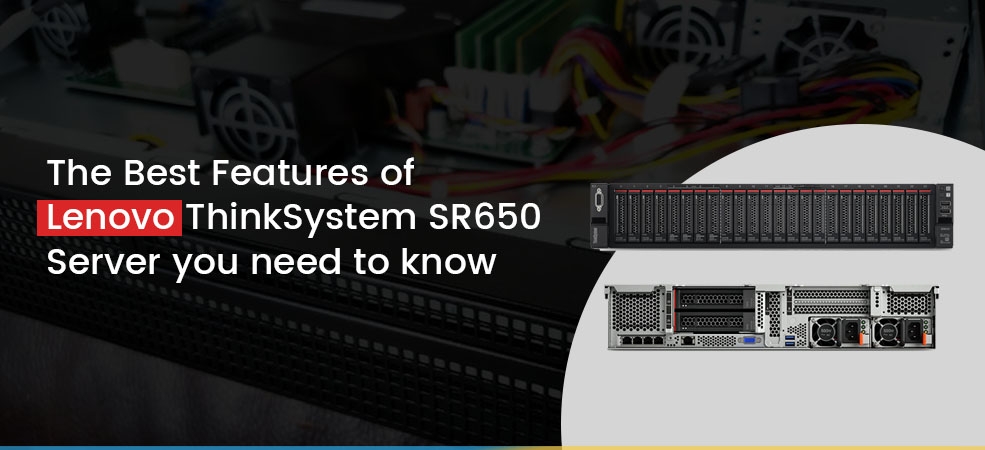













Comments (0)